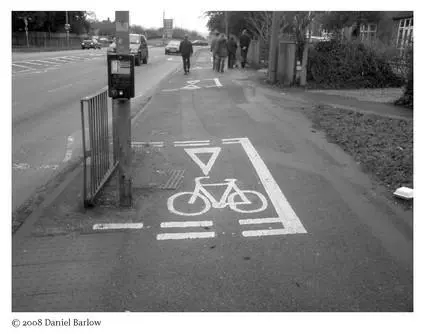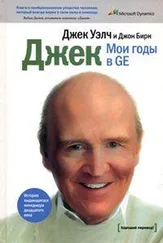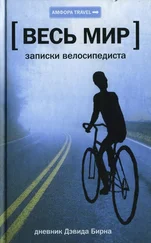
Maybe, for some, part of the thrill would go away if urban cycling became safe. But that might be the price to pay if it means more people will start using bikes to get around. That thrill isn’t really an appropriate thing to oblige schoolkids and seniors to be burdened with. Living in New York used to be a lot more dangerous in general, but that’s hardly something to get all nostalgic about. So, while we might need a cool, stylish helmet to be available right now, for everyone in a more perfect world it might be optional.
Through Transportation Alternatives, a local advocacy organization, I am introduced to Jan Gehl, a visionary yet practical urban planner who has successfully transformed Copenhagen into a pedestrian- and bike-friendly city. At least one-third of Copenhagen’s workforce gets to work on bikes now! He says it will approach half soon. He’s not dreaming either. We here in New York might think that’s natural and all well and good for the Danes, but New Yorkers are feisty and independent minded, so that can’t happen here. (Why people feel that driving a car makes one independent minded is a mystery to me.) But Gehl reveals that his proposals initially met with exactly that kind of opposition over there: the locals said, “We Danes will never agree to this—Danish people won’t ride bikes.”
In one of his slide talks he shows before-and-after images of a street. Here is the after:

Previously, the area bordering this canal had been used for parking; cars would drive along it looking for parking slots. This lovely spot was, not too long ago, primarily an ugly parking lot and a thoroughfare. Now it’s a destination. Cars are still allowed to drive here, but not park. And from that one small change the area exploded as a pleasant gathering place and even as a tourist destination. Expensive “improvements” by the city weren’t even necessary to allow this to happen. The customers and local businesses did the improvements—putting out chairs and installing awnings—though many of them initially complained that if people couldn’t park in front of their establishments their businesses would suffer. That seems to be how Gehl works, making fairly small incremental changes over many years, here and there, that eventually transform the whole city and make it a more livable place.
Gehl has agreed to join the Town Hall event and give a short talk! He has recently been hired as an adviser by the city of New York and has made studies of situations in other cities—Amsterdam, Melbourne, Sydney, and London—in addition to the one he did in his native Copenhagen. The Department of Transportation here in New York has now asked his office for further recommendations. Whether they and the city listen is another matter, but it’s a heartening move.
For the Town Hall event I now can move on and begin to focus on securing the more obviously entertaining parts of the proposed event. I contact the Young@Heart Chorus. They’re a choir based in Northampton, Massachusetts, and their youngest member is in his midseventies. They sing songs by Sonic Youth, the Ramones, Flaming Lips, and Talking Heads. (That’s how we made contact.) Needless to say, “Road to Nowhere” takes on added meaning when sung by this bunch. I ask them if they would sing the Queen song “Bicycle Race” at this event—and a few more songs, as I expect they’ll be well received. They’ve never performed in New York City before, which is a surprise, as they’re almost a staple on the European arts festival circuit. They agree to participate, but will require nap time and sufficient toilets for thirty people.

I recall that I have seen various Puerto Rican and Dominican groups around town who trick out antique Schwinn bikes, often adding giant boom boxes as well. The boom boxes mean that when the group becomes mobile they bring their own salsa or merengue sound track. I approach one group, Eddie Gonzalez and the Classic Riders, and get their card—they have a business card! I invite them to show their bikes onstage and explain briefly what they do. (Their stage entrance ends up being them playing their amazing array of customized horns to a Hector Lavoe tune.)

I’d seen a British Web site, the Warrington Cycle Campaign, that has a section called “Facility of the Month” with wonderful deadpan captions for photos of local bike lanes that lead into oncoming traffic or dead-end into phone booths. A representative of that group agrees to give a short tongue-in-cheek slide show.
The caption on their Web site reads: “After watching an episode of Star Trek , the forward-looking traffic planners of Oxford were thinking about how transport infrastructure would work in the middle of the next century. Boldly predicting that by then bicycles would be equipped with teleportation devices they realized that they could save a lot of paint by designing intermittent cycle paths, with cyclists able to beam themselves from one stretch to the next.”
Hal, who repairs bikes at Bicycle Habitat on Lafayette Street, also has a more unusual job there: as new locks come into the store his job is to determine how long it takes to crack each one. Some locks he can break in a second, with a snip of some wire cutters he carries in his back pocket. Others require more elaborate tools. Hal agrees to break some locks onstage.
Rhonda Sherman from the New Yorker suggests adding some culture. In New Yorker speak this means some bike-related writing. Calvin Trillin will read a piece he’s written about riding in New York, and Buck Henry will read an excerpt from a Beckett piece about a bicycle. Rhonda arranges for Mengfan Wu to edit together a touching four-minute film montage of bikes in movies—from Butch Cassidy to Kermit the Frog to a scene from the TV series Flight of the Conchords. Theater director Greg Mosher is contacted and coordinates the evening, and he helps everything move at a good pace and takes an incredible weight off my shoulders.
Transportation Alternatives has come up with the idea to provide valet parking for bikes at the event (!), as there is almost nowhere to lock up around Town Hall and lots of cyclists will be expected to attend.
We’re almost ready. I’ve never done anything like this before—being an impresario rather than performing myself. I’m a little anxious. In the end, I have to modify some of my ideas for the event. It becomes obvious that a panel discussion involving numerous entities and city agencies could be a recipe for tedium and speechifying, so I give up on the idea that some consensus or compromise will be reached among all those folks in the course of one evening. It is decided that the agencies and the organizations will only present what they are actually going to do in the near future—not vague ideas but concrete plans. Naturally, this makes for shorter presentations.
On the night of the event I arrive with a bike cam attached to my helmet—well, the footage and my voice-over were actually shot the previous day but it looks like it is live. The camera shows my POV as I negotiate the Forty-second Street traffic and make my way to the theater, all the while providing a running commentary of tips for riding in New York traffic (“watch out for town cars and people with New Jersey plates”). Because a wide-angle lens is used it makes everything look slightly scarier than it is—cars and people loom suddenly into the frame—which makes it funnier, but probably doesn’t do much to encourage ridership.
Читать дальше













